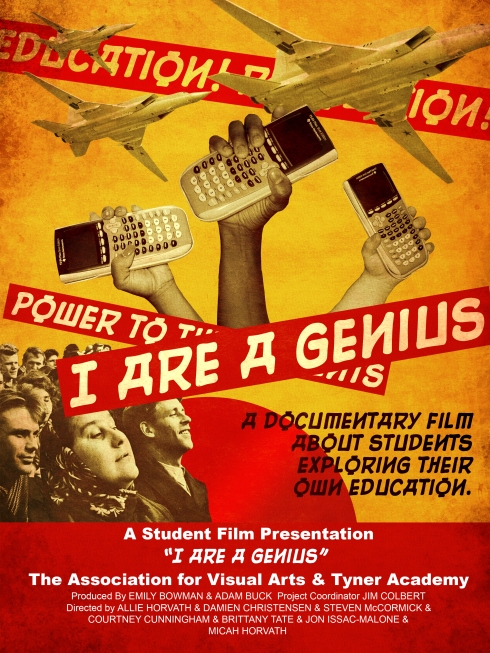If you mention classroom video to the average parent you bring up visions of some old 16 mm movie clacking away on a rickety old projector or, moving forward a decade or two, a VHS (remember those?) running on a 19 inch TV mounted up on the wall. The topics ran from PBS specials to hygiene movies. I personally loved the school bus safety movies. Lots of action and blood. Today, we run our classroom videos from DVD and use a dedicated player or a computer. But classroom video can mean so much more.
Using video production in the classroom can be fun, entertaining and meaningful for students no matter what grade they are in. From K through 12, making a video can impact student achievement and raise student interest in just about any subject. All it takes is a little equipment.
In my class we make our own videos and we don’t have a huge budget so we make do with consumer grade equipment. The kind of stuff you can buy from Circuit City or Best Buy or, for that matter, Wal-Mart. It gets kind of scuffed and some of it doesn’t even make it through the entire school year but it works well enough for us.
Disclaimer
I am not a technical kind of guy. I am what you might want to call an end-user. I like what technology can do but I have absolutely no interest in how it works. I started editing video in 1979 and have worked in TV stations around the south ever since. I can’t talk at length about frequencies and diodes and other techie topics but I am absolutely dedicated to the creative side of the business. But as far as I’m concerned, computers work by magic.
Cameras
We now have four whole camcorders as part of our classroom set. All four of them use a format called MiniDV. You want to stick with MiniDV if you plan to edit your videos rather than just showing them through the camera. We have three Canon ZR-930’s and one Panasonic PV-GS300. The Canons are very basic cameras with one extra benefit. They have an external microphone jack which allows students to plug in a wireless mic and boosts the audio quality immeasurably. Well…actually it is measurable but…never mind. The Panasonic is my favorite. It has three imaging devices instead of a single device, optical image stabilization and a pretty decent microphone. The video that comes off of this camera is great in terms of color saturation and clarity.
Of course a tripod is a requirement. It has two main functions. It reduces camera shake and reduces user fatigue. In other words, you can set up a tripod for hours and it never gets tired and it never gets shaky. Try that with a 9th grader. Look for one that is strong enough to hold the weight of your camera but if you’re using a consumer level camcorder, a twenty to thirty dollar tripod will work just fine.
Editing
As mentioned a little earlier, you want a camcorder that uses MiniDV tape. Not only is this becoming the standard format, it is just easier to work with when it comes time to edit. You will want to use a computer to edit in a style of editing called non-linear editing. It’s just easier to fix mistakes and the old linear, tape-to-tape equipment is expensive, slow and getting harder to find.
So you’re going to need a computer. We use Apples because Macs come out of the box with everything you need to download and edit video, create podcasts and author DVD’s. PC’s come with Microsoft Movie Maker which is a decent but somewhat limited editor. Other software is available and I have used Pinnacle Studio before with great success.
Then What?
Well, that’s up to you. Try to think of the video in terms of a text or an essay. Every movie a student makes is like a mini term paper. It requires thought, planning, research and some technology skill. Add that to the fact that kids just love TV and you can’t miss. Just give the class a topic, assign some jobs and let them run with it. It might encourage them even more if you post some of their work someplace like Teacher Tube. My class started an after school project with some local artists and filmmakers and their documentary ended up being shown around the city to great reviews. It was called “Golden Grillz & Satan Likes Puppies.” More on that in the next post.

 t they found. Most were surprised to find out that the education system is run like a business and that money matters as much, if not more, than the educational outcome. They were a bit taken aback to find that teachers and administrators and superintendents don’t all speak with a single voice. There is dissension in the ranks, sometimes vocal, sometimes not. They were also concerned about the number of educational professionals who were afraid to speak out against the system for fear of losing their jobs. We are in a down economy, the school system is making cuts and no one wants to make any waves…even if those waves help the students.
t they found. Most were surprised to find out that the education system is run like a business and that money matters as much, if not more, than the educational outcome. They were a bit taken aback to find that teachers and administrators and superintendents don’t all speak with a single voice. There is dissension in the ranks, sometimes vocal, sometimes not. They were also concerned about the number of educational professionals who were afraid to speak out against the system for fear of losing their jobs. We are in a down economy, the school system is making cuts and no one wants to make any waves…even if those waves help the students.